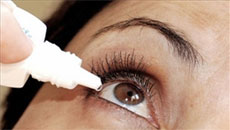What is Osteopathy?? … “osteo” must be something to do with bones or arthritis… this is a common misconception. Osteopathy is a holistic treatment that treats the body as a whole and not at all, limited to bones. Osteopathy is both an art and science that uses manual therapy to optimize the body’s own homeostatic mechanism to restore balance and health. It is based on the concepts outlined by Andrew Taylor Still, that the body’s functions are reliant on its structures, therefore must be treated as a whole.
Osteopathy is a safe and effective approach to health care. It is a drug-free, non-invasive form of manual therapy, with a primary focus on total body health. The aim is to positively affect the body’s mechanical, nervous, circulatory and lymphatic systems.
Osteopathic manual practitioners are highly trained to locate points and areas of restriction or excess force. Through a very fine tuned sense of palpation and manual therapy they will assess the joints, muscles, spine, tendons and organs to find the problematic area. As the core concept of osteopathy, revolves around the body’s self-healing capacity they work with you and your body to support good habits and a healthy lifestyle suited specifically for you. So no two treatments are exactly the same since the body changes and integrates the changes imposed on it.
What makes osteopathic treatment different from other professsions?
Osteopathy combines the different systems of the body and ensures that they are working together in harmony. The visceral system (organs) and the craniosacral system are unique to an osteopathic treatment, in addition to the musculoskeletal, nervous, fluid balance, and structural systems.
What does Osteopathy treat?
The osteopathic treatment approach does not treat the symptoms alone but the cause. Some of the most common conditions treated by osteopathy are:
• Neck and Back pain
• Sports injuries
• Headaches
• Whiplash
• Postural Problems
• Sciatica
• Arthritis
• Pre- Post-Natal Care
• Sleep disturbances
• Digestive Problems
• Carpal Tunnel Syndrome
• Metabolic imbalances
• TMJ problems (Jaw pain)
Osteopathic practitioners treat people of all ages and various conditions with a treatment and preventative approach. Identifying the mechanics of dysfunction are the first step towards recovery. Therefore, it is important to be aware of your postural alignment.
How does Osteopathy Work?
Osteopathic treatments can effectively help to relieve pain, improve posture, balance, and mobility. It does this by restoring and realigning the body’s mechanical imbalances allowing freedom of motion. Osteopathy has a deep and long lasting impact as it works on, and through the various layers of the person. It is a well rounded approach to patient care which evaluates and treats the structure and function of the body, thus treating the patient and not the disease. An osteopathic practitioner will use various hands on techniques and will combine this with education regarding lifestyle adaptations, and exercises that will help further support ones recovery.
An example of Osteopathic treatment approach:
Osteopathic treatment has been clinically proven to be an effective form modality to treat low back pain… So if you came in with complaints of low back pain your practitioner would start with details of your current and past medical history. Following which you would be asked to demonstrate a few different movements and some specific tests would be performed. This would then help to determine if the pain is coming from top to bottom, inside to out or vice versa etc. The information collected would not only be used to treat the condition at hand, but also to educate you about some preventative measures to take, and further extrapolate information to promote better lifestyle changes. It can be expected that part of your “low back pain” treatment, may include therapy involving your ankle to correct the forces coming up through the back or even at your neck to support forces traveling down through the back.
At the end of the day “the ankle bone’s connected to the leg bone’s, the leg bone’s connected to the hip……” something we all know but sometimes don’t appreciate.






